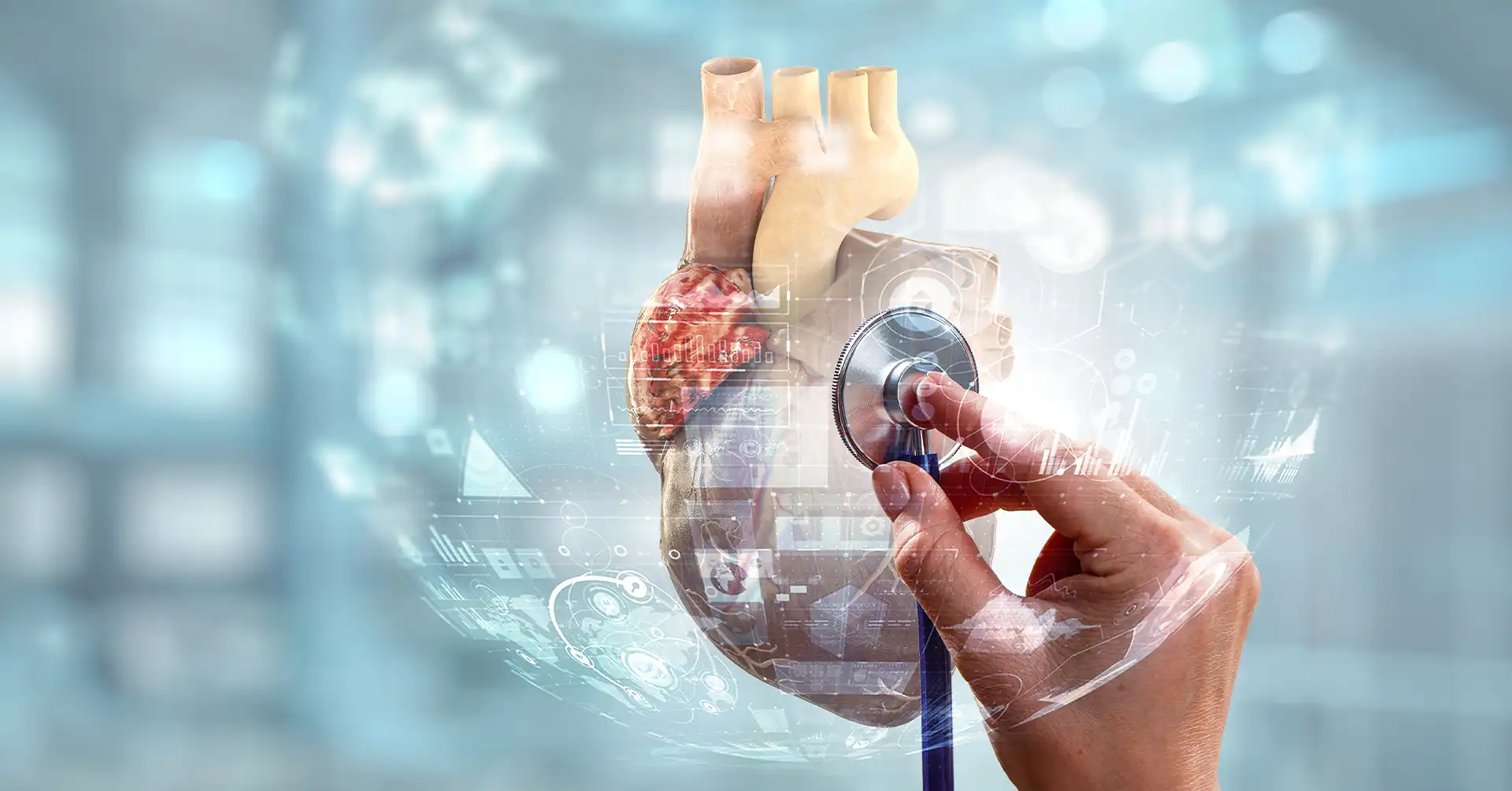End-stage heart failure is a disease entity where the heart is unable to pump blood out satisfactorily. The condition is life-threatening. The most prominent symptoms in patients suffering from end-stage heart failure are severe fatigue, breathlessness, and swelling in the legs and feet. The quality of life falls tremendously as conducting day-to-day activities becomes hard. Thus, treating the condition is of the essence because it affects survival and well-being directly. In the absence of adequate intervention, end-stage heart failure can cause a variety of serious complications, such as serious complications, and can eventually lead to death. During the last couple of years, artificial heart implant have been the most radical measure for those patients who are suffering from end-stage heart failure. This is the latest innovation, which takes over the pumping action of the heart and gives patients their second chance at life when all other options have already been exhausted.
Importance of Artificial Heart Implant
Artificial heart implantation is not limited by the availability of donor hearts, unlike conventional transplantation of a heart, hence more patients can be treated and saved without the long wait.
Technological Advancement: The artificial heart implant is one of the great strides of medical technology. Such devices are designed to provide an artificial organ that will function as closely to the natural heart as possible, therefore offering the best results to patients so that some level of normalcy can be resumed.
Better Quality of Life: A heart implant can, for many patients, mean the strength to again enjoy everyday activities. Generally, patients who have had an artificial heart implanted report enhanced energy levels, improved mobility, and a renewed sense of hope.
Impact on the Medical Fraternity: The success stories of artificial heart implants have also perpetuated further research and development in cardiac care. As a result of this innovative technology, many hospitals in the US are better equipped to handle very complex heart conditions.
A Step-by-Step Process of Implanting an Artificial Heart
Preparation Before the Surgery
Before a patient is taken for an artificial heart implant surgery, doctors will do detailed tests on the body to ascertain whether it has the strength to go through the process. It includes blood tests, imaging scans, and assessments of heart functioning. The patient will visit the surgical team in charge and will brief everything to them and ask whatever questions comes to his or her mind.
Anesthesia and Incision
On the day of the surgery, he is under general anesthesia, and this ensures that he remains unconscious and does not feel any pain during the operation. The surgeon carefully makes an incision along the chest to reach the heart. This is a critical stage of the artificial heart implant.
Removal of the Damaged Heart
The surgeon removes the patient’s diseased heart. This part of the surgery is delicate and calls for precision. One has to be very careful not to harm the surrounding blood vessels and tissues so that they are intact to begin the next process of implanting the artificial heart.
Grafting of the Artificial Heart
The surgeons insert the artificial heart into the chest cavity and attach it to the major blood vessels. This is a very important step in implanting an artificial heart. The surgeons ensure that the device fits well in place and functions appropriately.
Power Source Linkage
Power source: The motion requires a power supply to keep the artificial heart working. The patient will wear an external battery pack that is connected to it. It makes the implant work continuously.
Closure
The incision in the chest is closed with stitches or surgical staples after the artificial heart has been fitted and tested. The patient is transferred to the intensive care unit for close observation.
Monitoring after Surgery
The patient is then shifted to the ICU, where medical staff continuously monitor their vital signs and the performance of the artificial heart. This period is very important for the proper functioning of the artificial heart implant and for maintaining stability in the patient.
Key Professionals Involved and Their Contributions
Cardiac Surgeon
The cardiac surgeon is in charge of the implanting surgery of an artificial heart. He makes critical decisions during the surgery and ensures that the procedure is carried out with utmost precision and care.
Anesthesiologist
He renders anesthesia and monitors the vital signs of the patient throughout the surgery. His role is highly important in the safety and comfort of the patient during this artificial heart implantation.
Cardiologist
Before the surgery and after, he examines the heart condition of the patient before and conveys if a person is a good candidate for the artificial heart implant. He also provides long term care and monitoring post surgery.
Surgical Nurses
The surgical nurses help the surgeon during the procedure, they prepare the surgical instruments used and assure a sterile environment, their support is imperative to carry out the artificial heart implant.
Perfusionist
The perfusionist operates the heart-lung machine during surgery. This is the machine that takes over the circulation and respiration functions of the heart and lungs while the artificial heart implant is fitted in its place. The perfusionist ensures that the blood circulation and oxygenation of the patient are properly maintained.
ICU Staff
_recovery upon completion of the surgery. This team monitors the working of the artificial heart implant in and treats the patient for post-operative care, marking all the complications that may arise.
How Artificial Heart Works: Mechanisms and Functionality
An artificial heart implant is one of the wonders that modern medicine has come up with to replace a flailing human heart. The devices are manufactured to pump blood through the body so that the vital organs get sufficient oxygen and nourishment. Here’s how this technology works:
Blood-pumping mechanism: Blood is circulated throughout the body by means of a complex pump mechanism of the artificial heart implant. The pump emulates a heartbeat, as such, creating an extremely smooth flow of blood.
Power source: The device could be powered by either an internal power source or external batteries. Most patients use a pack of batteries that are small in size and are carried in a portable backpack to enable easy movement.
Control System: State-of-the-art control systems track an artificial heart implant’s performance, changing pump rate based on body need. This ensures that patients can participate in various activities with proper blood flow.
Biocompatible Materials: Artificial heart implants are made of materials biocompatible to the body. Such materials reduce the risk of infection and rejection, hence making the device more reliable.
Cardiac Device Innovations: Evolution and Improvement of Artificial Heart Technology
The development of artificial heart implants underwent a lot of evolution, and the improvements significantly enhanced their effectiveness and reliability. Some of the major innovations include:
Smaller, More Efficient Designs: Early artificial heart implants were huge and unwieldy. Modern devices are far smaller and more efficient, which makes them easier to implant and far more comfortable for patients.
Longer Battery Life: Advances in batteries extend the life of the power sources used in artificial heart implants. It gives patients a longer time between changes in the batteries, thereby improving their quality of life.
Improved Control Systems: Advanced artificial heart implants are equipped with sophisticated control systems that respond to a patient’s needs. Physically strenuous or stressful activities automatically adjust the pump speed.
Wireless Monitoring: The latest generation of artificial heart implants now comes with wireless monitoring capabilities, allowing doctors to monitor device performance from anywhere. This could help in faster calibrations and better care for the patient.
Better Durability: Material sciences innovations are driving ever more hard-wearing artificial heart implants. They can now bear the rigors of daily life without having a patient go for frequent replacements.
Artificially implanted hearts have been a giant step forward in the treatment of cases of end-stage heart failure. Much is yet to be expected in the future, as research and development remains continuous for those dependent upon this life-saving technology. As they are continuously evolving, these devices bring new hope and an enhanced quality of life to many patients within the United States.
What to Expect Immediately After the Surgery
Recovery after an artificial heart implant actually starts in a hospital. First and foremost, the initial stay will be in the intensive care unit, where you are closely monitored. Doctors and nurses monitor vital signs to make sure everything is going fine with the new implant of the artificial heart.
You should expect to feel a little sore and in some pain around the area where the surgery was done, which is completely normal. Pain management will be highly prioritized, and medications will be administered accordingly by your medical team. Breathing exercises and physical therapy will also begin soon after surgery to help you in your recuperation. This is all to get you on your feet, strengthen you enough so that you can go home as soon as possible.
Long-Term Care and Monitoring: Maintaining Health with an Artificial Heart
In case you have undergone the implantation of an artificial heart, you will need after-care for a longer time. You will regularly visit your cardiologist to monitor the performance of the device and your overall health. These follow-ups, in most cases, will consist of blood tests, image studies, and physical examinations.
Taking care of oneself with an artificial heart implant means living healthily: eating a balanced diet, keeping regular exercise, shunning smoking, and avoiding excessive alcohol consumption. Your care team will help set up a personalized treatment plan for you. Equally important is that you keep up with the most recent developments in artificial heart technology and the types of treatments provided.
Difference to Everyday Life Since the Implant
You can lead a near-normal, good quality of life with an artificial heart implant. Many patients feel refreshed, remain mobile, and are able to do things they couldn’t do before. For example, now you may be in a position to have a long walk, enjoy hobbies, or even travel, all the things which a person couldn’t do before surgery.
These stretch into psychological benefits as well. Knowing that your artificial heart implant could successfully treat heart failure can dispel apprehensions of anxiety and depression. You will likely feel a sense of restoration in hope and confidence about your future. Indeed, you can share much emotional support and practical advice from other people who have undergone similar procedures just by joining support groups.
Conclusion
An artificial heart implant can thus be literally a lifeline for such patients who are at the last stage of heart failure, completely transforming their recovery process, long-term health, and general quality of life. Patients can rejuvenate themselves by taking proper care and monitoring themselves after the implantation. A journey that may start with a difficult recovery becomes one of revolutionary potential for improved daily living and better health. Coupled with this wonder in technology, patients in the US can now have a brighter and more active future with the help of an artificial heart implant.
Also Read:
Artificial heart: A Medical Miracle Made of Titanium!
Artificial Intelligence on Mental Health- Impact and Solutions!






